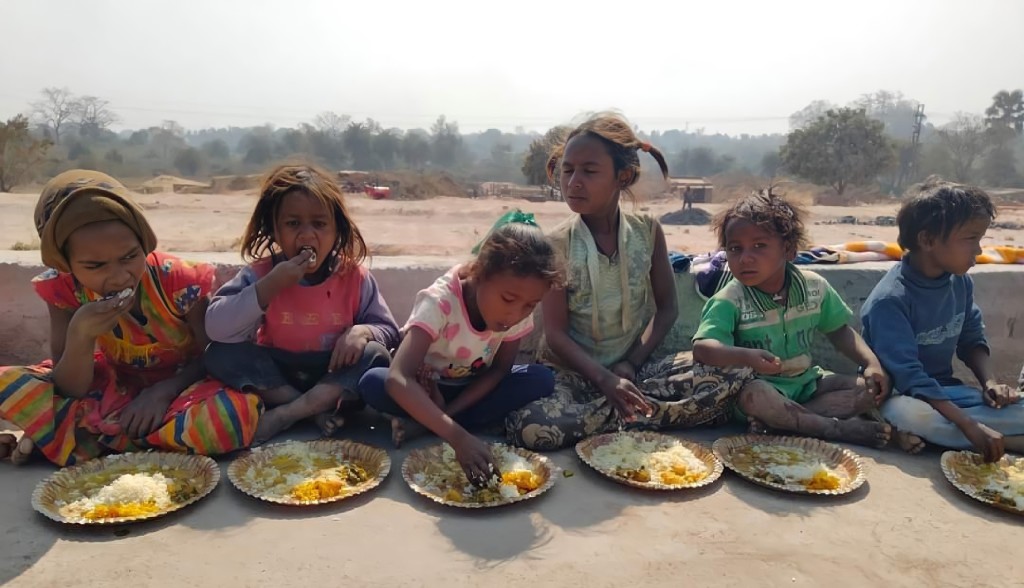You Can’t Isolate The Food Crisis From The Climate Crisis
Interrupted food exports from Russia and Ukraine could have disastrous consequences for regions that are already food insecure due in part to climate change.
By Andrew McCormick
Since Russia’s war in Ukraine began, there’s been much talk about the pursuant energy crisis and the world’s need for a clean-energy transition. Though the implications for climate change are significant, journalists have only sometimes spelled them out in their coverage. Now, there is another crisis emerging as a knock-on effect of the war: the potential for food shortages, which in turn could spark malnutrition, famine, and unrest around the world, especially in poorer countries. Climate change again plays prominently in this crisis, threading together issues of agriculture, trade, justice, and diplomacy. It’s a tangled web but, still, it’s critical that journalists step back to help audiences observe the big picture.
The short version of the food crisis story goes, simply, that interrupted food exports from Russia and Ukraine could have disastrous consequences for regions that are already food insecure due in part to climate change.
Here’s the longer version, starting in East Africa:
For three rainy seasons straight, East Africa has come up dry. Across swaths of Kenya, Ethiopia, Somalia, and Djibouti, the earth is barren. Water reserves are depleted. Fueled by climate change, historic heat and drought are killing livestock and wiping out crops, including such essential grains as millet, rice, and wheat, that make up large portions of diets in the region. Similar problems plague other parts of the sub-Saharan continent, but in East Africa the situation is especially dire, with some 13 million people facing “acute food and water shortages,” according to the United Nations’ Environment Programme; by mid-year, the same fate will likely befall 25 million more.
War in Ukraine worsens matters because, together, Russia and Ukraine account for more than a quarter of the world’s wheat exports, including up to 90 percent of East Africa’s wheat imports. Russia and Ukraine have also been key exporters of fuel, fertilizers, and sunflower oil, all critical to many developing countries’ food systems. Amid war, both Russia and Ukraine have limited exports of critical commodities, including wheat. Russian trade is restricted further by sanctions; Ukraine, meanwhile, is unable to operate Black Sea ports or the railways that carry its produce overland. Before the war, as it was, climate change was slashing Ukrainian crop yields. Now, much of the country’s farmland is expected to become a warzone; where that doesn’t happen, it’s unclear whether farmers will have the resources and labor needed to harvest crops and plant for next season.
The result is a spike in food prices worldwide, at a moment when prices were high already due to Covid-19-related supply issues and climate change-induced agriculture difficulties. The World Food Programme estimates East Africa will be hit hardest by price increases. Turkey, Egypt, Indonesia, and Bangladesh, all top importers of Russian and Ukrainian wheat, are also feeling the squeeze. Because wheat is traded as a global commodity, price-shock will also be felt in wealthier, wheat-growing countries, including China and the United States.
Many journalists have handled the war, food shortages, and climate change individually, or have linked just two of those three major issues. (A recent New York Times story, for example, broke down how the war might bring about food shortages, but didn’t mention climate.) Taken together, though, the situation is a powerful demonstration not just of war’s folly but of how climate change bridges many issues and exacerbates other problems.
The food crisis is also an opportunity to help educate audiences, whom studies show are increasingly interested in climate change (and climate coverage) but often still don’t grasp the enormity of the problem or the irrefutable necessity of solutions—an issue, in our stories, that even a sentence or two to draw the climate connection might help resolve.
Outlets that have taken a more holistic approach, meanwhile, show it’s not difficult to tie things together. In an E&E News story headlined “Climate and Russia could combine to create a food crisis,” reporters Sara Schonhardt and Benjamin Storrow offered this effective distillation: “The war is playing out as climate change alters the contours of global agriculture.” In a story for Climate Home News about East Africa’s food crisis specifically, Chloé Farand described how the Ukraine war factors in and then exactly how climate change laid the groundwork for things to get so bad: “Human-caused climate change has contributed to the warming of the western Pacific, which in turn strengthens La Niña [a global weather pattern] and increases the probability of drought in East Africa.”
Another essential element of the war-food-climate megastory: solutions, which for food shortages and climate are sometimes one and the same. (In general, solutions-framing is critical to climate coverage, if only to ensure audiences know there is hope, if humanity acts.)
Like with the energy crisis, there will be debate across the world on how to compensate for food shortages, given that consequences of the Ukraine war are likely to persist for some time, even if the war is short-lived. Whatever solutions governments and industry offer will deserve scrutiny from journalists. Food production accounts for an estimatedone-third of humanity’s total greenhouse gas emissions, and so, with countries on the hook to rein in their emissions, experts say now’s not the time to double down on some of the industrial-agricultural practices that underlie climate change and helped contributed to this mess in the first place. Put differently, this crisis might present an opportunity to implement climate-friendly changes in our global food systems that are needed anyway.
In Africa, in particular, which experiences among the worst climate impacts despite contributing only three percent of the world’s carbon emissions, the urgent needs are to make countries less dependent on foreign imports and make food systems more resilient to climate change. “For many Africans, it is adapt or die,” Patrick Verkooijen, who heads the Global Center on Adaptation, said recently on Africanews, a sister-network of Euronews that broadcasts across sub-Saharan Africa. Solutions are ready-at-hand — including drought-tolerant crops, digital tools for farmers, and early warning systems that help communities prepare for climate-related disasters — and across the continent governments and development organizations are racing to implement them. But adaptation is expensive, adding up continent-wide to $33 billion annually, according to Verkooijen. Under international climate agreements, wealthy nations were meant to deliver $100 billion a year to poorer nations beginning in 2020, to support adaptation and mitigation efforts. Yet most of that money never materialized. “Rich countries have to step up,” Verkooijen told Africanews, “and the time to act is now.”
All this context, granted, would be difficult to fit into any one story, much less a tweet or SEO-optimized headline. But as events unfold, it’s essential that news organizations make space to connect the dots for audiences. The food crisis in East Africa is only a preview of what experts mean when they call climate change a “threat multiplier.” We’ll see even worse if global warming continues unchecked. Climate change and widespread famine are the results of choices made, in large part, by wealthy countries. Stronger, solutions-minded journalism might help people the world over press industry and government leaders to finally choose differently.
Andrew McCormick is CCNow’s deputy director and an independent journalist in Washington, D.C. His work has appeared in The New York Times, The Atlantic, The Nation, and Columbia Journalism Review, among other publications. Follow him on Twitter @AndrewMcCormck.






3 Comments